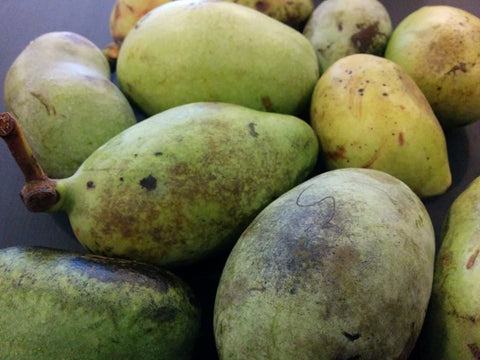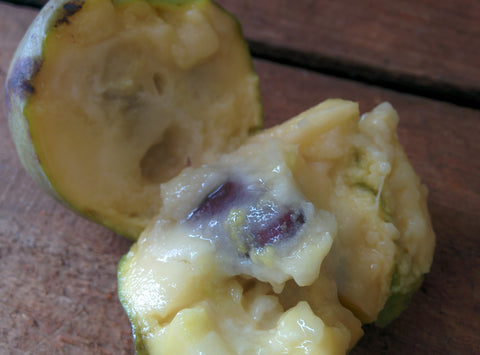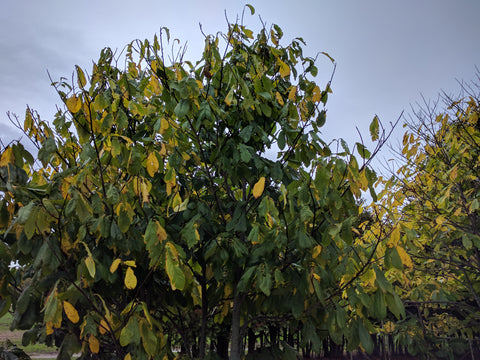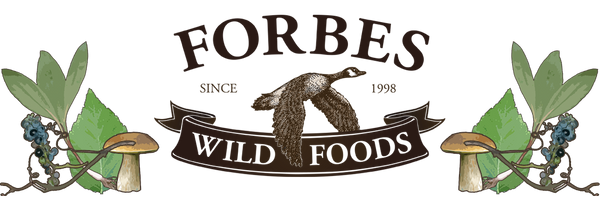일반 파우파우
•8월 02 2018 에 게시됨

놀라운 Paw Paw를 소개합니다. Indian Banana 또는 Asimina Triloba라고도 합니다. Paw Paw 과일은 온타리오에 속하지 않는 열대 과일처럼 보일 수 있지만, 대륙 전역에서 다양한 품종이 자랍니다. 크림 같은 커스타드와 같은 질감이며 바나나, 망고, 배, 파파야를 연상시키는 맛이 납니다. 독특하고 흔하지 않으며 사랑스러운 가을 과일로, 누구나 한 번쯤은 시도해봐야 할 과일입니다.


진정으로 놀랍고, 독특하고, 이해하기 어려운 paw paw는 당신의 감각을 놀라게 할 것이고, 당신의 가을 즐거움 목록에 빠르게 추가될 것입니다. 즉, 당신이 구할 수 있다면 말입니다. 이 보물에 대해 아는 사람은 거의 없고, 그것을 맛본 사람은 더 적습니다.

파우파우 부동산
파우파우는 작은 관목과 같은 나무에서 자라며 약간 다른 여러 품종이 있습니다. 녹색에서 노란색으로 익고, 노랗게 변하면서 큰 검은 반점이 생기면서 풍미와 단맛이 강해져 캐러멜 커스타드와 비슷한 맛이 납니다. 이 과일은 단점이 없는 것은 아닙니다. 잘 운반되지 않고, 익지 않은 것과 정말 익은 것 사이의 시간이 며칠이 걸릴 수 있으며, 풍미가 아치형으로 바나나와 같은 것에서 과일과 크림 같은 것, 그리고 칼륨이 살짝 섞인 캐러멜과 같은 것으로 변합니다. 바나나와 마찬가지로, 어떤 사람들은 완전히 검게 변한 것을 좋아하는 반면, 다른 사람들은 만졌을 때 부드러울 때, 노랗게 변하기 시작할 때를 선호합니다.

파우파우 과일은 어떻게 자라나요?
파우파우는 번식을 위해 일반적인 수분매개자에 의존하지 않고 꽃이 썩은 고기를 찾는 사체 곤충을 끌어들이는 흥미로운 식물입니다. 파우파우를 재배하는 사람들은 곤충을 끌어들이고 수분을 늘리기 위해 관목에 고기 덩어리를 걸어두는 것으로 알려져 있습니다. 파우파우는 또한 얼룩말 제비꼬리나비 유충과 파우파우 스핑크스 나방 유충의 서식지이기도 합니다. 영광스러운 아시미나 트릴로바 나무는 북미의 대부분 숲과 비옥한 땅에서 자랍니다. 이 식물은 과일을 맺기 시작하는 데 5~7년이 걸리며, 대부분의 과일나무와 마찬가지로 좋은 해와 실망스러운 해가 있습니다. 성숙함에 따라 근처에 다른 싹이 나서 숲으로 자랍니다. 새로운 어린 식물을 퍼뜨리고 확장하거나 이식하려면 삽(봄에)을 사용하여 모체에 연결된 주근을 분리하고 1년 동안 그대로 두십시오. 그러면 다음 봄에 이식할 준비가 됩니다.

파우파우는 북미에서 가장 큰 토종 베리이며, 열대 지방에 국한되지 않은 유일한 종입니다. 맛있는 이 과일은 재배에 비교적 손이 덜 들고 많은 벌레에 강하지만, 잘 운반되지 않고 익었을 때 가장 예쁘지 않습니다. 이러한 이유로 파우파우는 상업적으로 큰 성공을 거두지 못했고, 그 결과 대부분 잊혀졌습니다.


파우파우 과일을 구입할 수 있는 곳
우리는 가능할 때마다 파우파우를 판매합니다. 어떤 해에는 파우파우 20파운드를 얻고, 어떤 해에는 200파운드를 얻습니다. 우리는 이 환상적인 과일에 대한 제한된 공급원이 몇 개뿐이지만 과일 재배자들과 협력하여 더 많은 파우파우 숲을 조성해 왔습니다. 파우파우 재배에 관심이 있다면 파우파우 모종에 대한 사전 주문도 받습니다. 열매를 맺기까지 몇 년이 걸릴 수 있으며 수분을 위해 두 개 이상의 식물이 필요하기 때문에 모종은 쌍으로만 판매합니다.
파우파우 관련 문의 사항이 있으시면 제목란에 파우파우라고 쓰고 forbes@wildfoods.ca 로 이메일을 보내주세요.
온타리오에서 파우파우를 재배하고 이를 시장에 내놓거나, 더 많이 심을 씨앗을 구하거나, 품종의 차이를 맛보기 위해 과일을 교환하고 싶다면 1-877-354-9453으로 전화하세요.




댓글
1 댓글
-

게시자 mahogany luniza copeland | September 24, 2024
댓글을 남겨주세요these tast amaizing try one